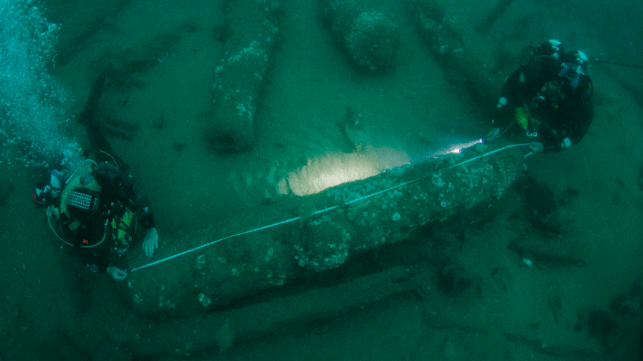Two Brothers Discover Lost Wreck of HMS Gloucester in the North Sea

After 15 years of secrecy, two brothers who discovered a famous Royal Navy shipwreck off the coast of Norfolk, England have finally revealed their find to the public.
Brothers Julian and Lincoln Barnwell are recreational divers who have explored the shipwrecks off the Norfolk Coast for decades. In 2007, they found a ship which they - and countless others - had long sought. The wreck site they encountered turned out to be HMS Gloucester, which grounded in 1682 during a personnel transport voyage for a very important person: the Duke of York, the future King James II. The ship was lost, and though the Duke of York escaped, an estimated 150-250 people died in the wreck.
The brothers discovered and recovered countless artifacts from the ancient wreck, including bottles, spectacles, clothing, dividers for chart work and - on a later dive in 2012 - HMS Gloucester's bell. This was key to the vessel's formal identification by the UK Ministry of Defense and the Receiver of Wreck. But even after the site was conclusively identified, the team of archaeologists, divers and regulators involved in the find decided that it had to be kept under wraps for its protection.
Now that the wreck has been explored and proper protections are in place to safeguard its security, the Gloucester's identity has been finally revealed. Artifacts from the wreck will be displayed at the Norwich Castle Museum next spring, including the ship's bell. All of the finds are technically the property of the UK Ministry of Defence, except for personal items, which belong to a higher branch of the British government - the Crown.
There are no plans to raise the wreck itself, which has split in half along the length of the keel. However, research work will continue: Gloucester is the only surviving third-rate warship of the Cromwellian era, and a team of archaeologists and historians plan to study the vessel's remains for years to come.
